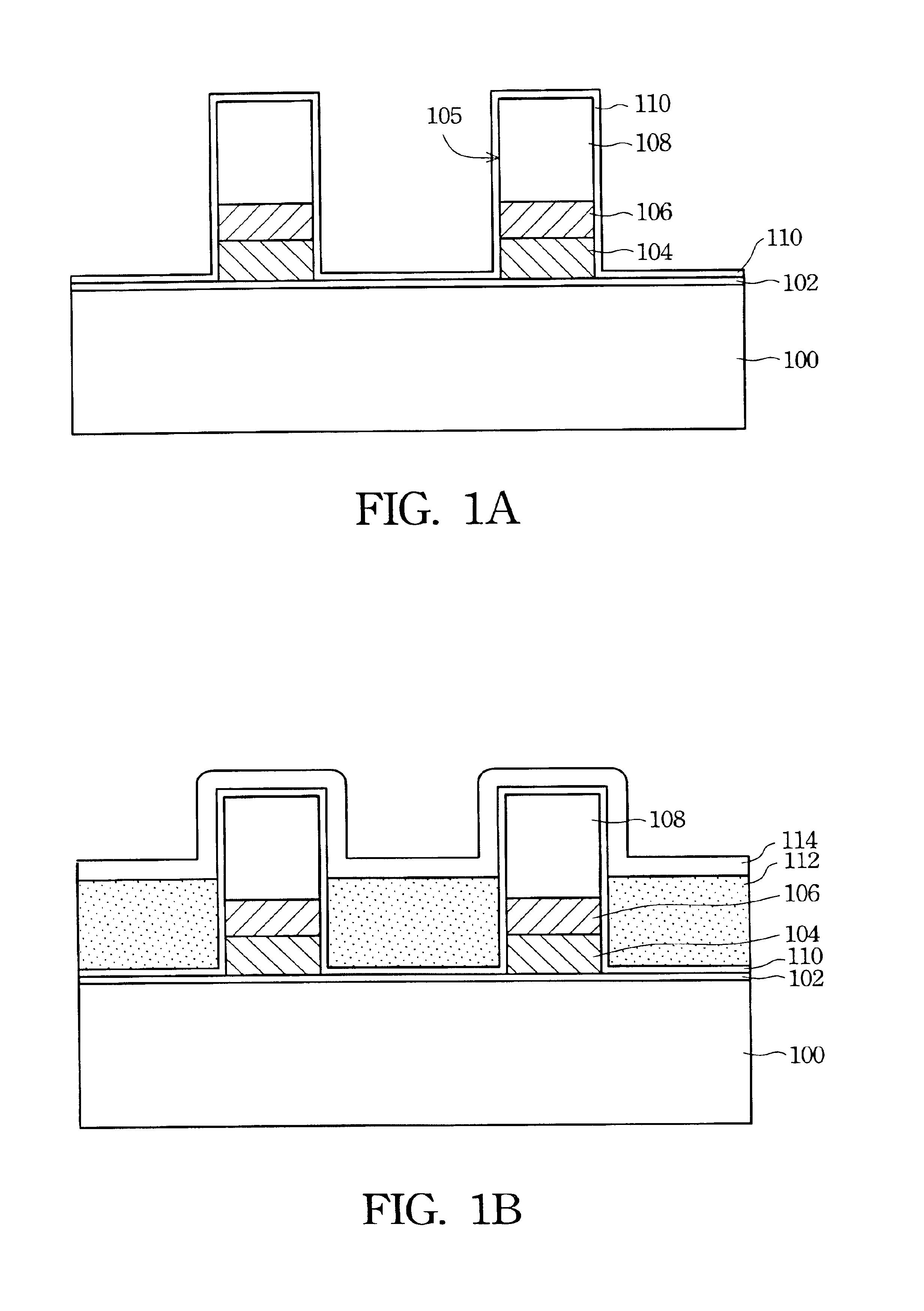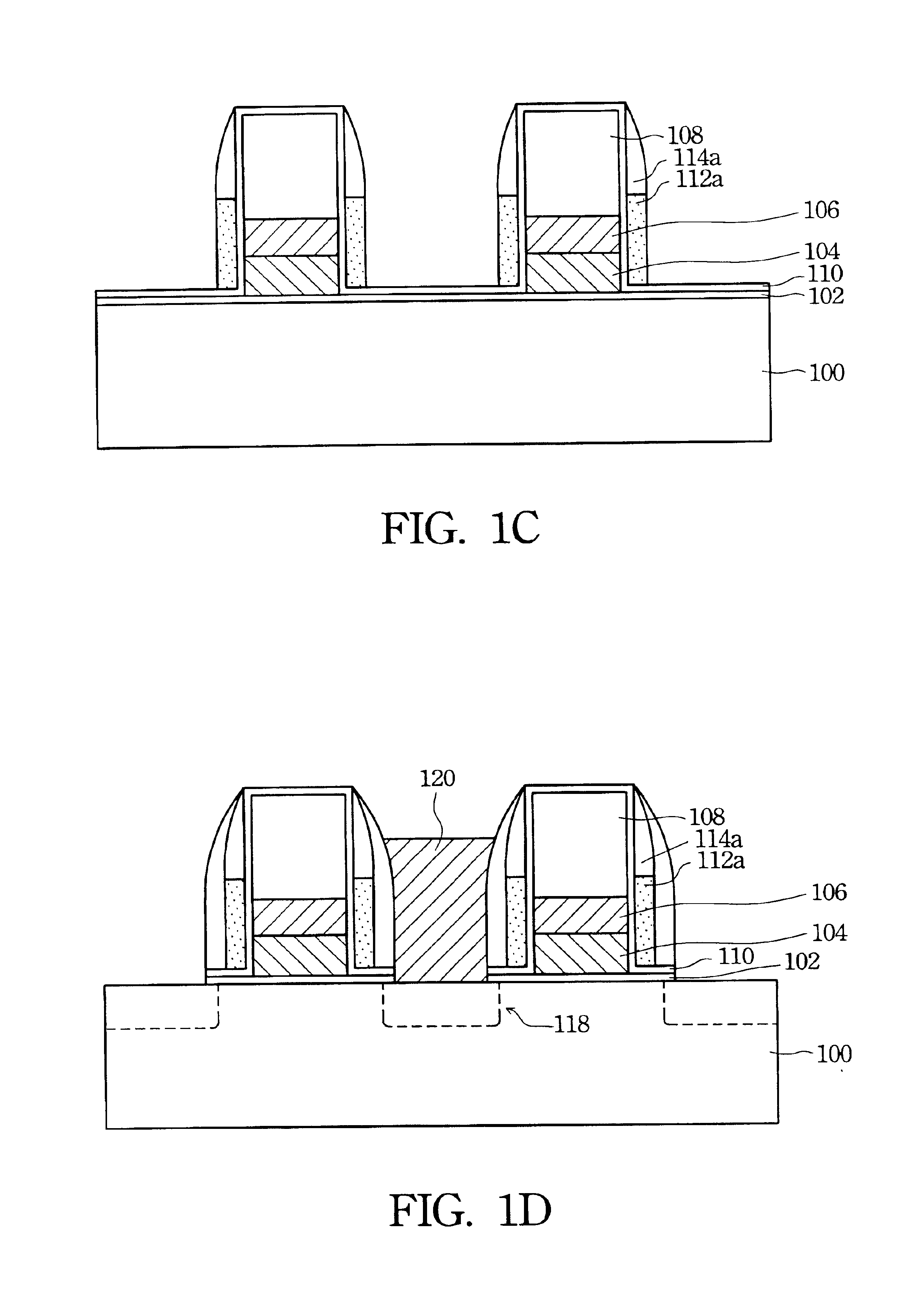Stacked spacer structure and process
- Summary
- Abstract
- Description
- Claims
- Application Information
AI Technical Summary
Benefits of technology
Problems solved by technology
Method used
Image
Examples
Embodiment Construction
The present invention provides a stacked spacer structure in which a low dielectric bottom portion is formed under a silicon nitride top portion and a silicon nitride outer portion covered thereon to reduce the equivalent dielectric constant. Furthermore, by precisely controlling and shrinking the width of the stacked spacer structure, device dimension is reduced and thus the integrated density is improved.
FIGS. 1A-1D are schematic, cross-sectional views according to one preferred embodiment of the claimed invention. Referring to FIG. 1A, a semiconductor substrate 100 such as a silicon substrate with a lattice orientation is provided. A stacked gate layer, e.g., a word line or a branch connecting to the word line, is formed on an active area (not shown) of the substrate 100 after completing device isolation. The stacked gate layer comprises a gate dielectric layer, a gate conductive layer and a gate cap layer, stacked from bottom to top, respectively. The gate dielectric layer can ...
PUM
 Login to View More
Login to View More Abstract
Description
Claims
Application Information
 Login to View More
Login to View More - R&D
- Intellectual Property
- Life Sciences
- Materials
- Tech Scout
- Unparalleled Data Quality
- Higher Quality Content
- 60% Fewer Hallucinations
Browse by: Latest US Patents, China's latest patents, Technical Efficacy Thesaurus, Application Domain, Technology Topic, Popular Technical Reports.
© 2025 PatSnap. All rights reserved.Legal|Privacy policy|Modern Slavery Act Transparency Statement|Sitemap|About US| Contact US: help@patsnap.com



